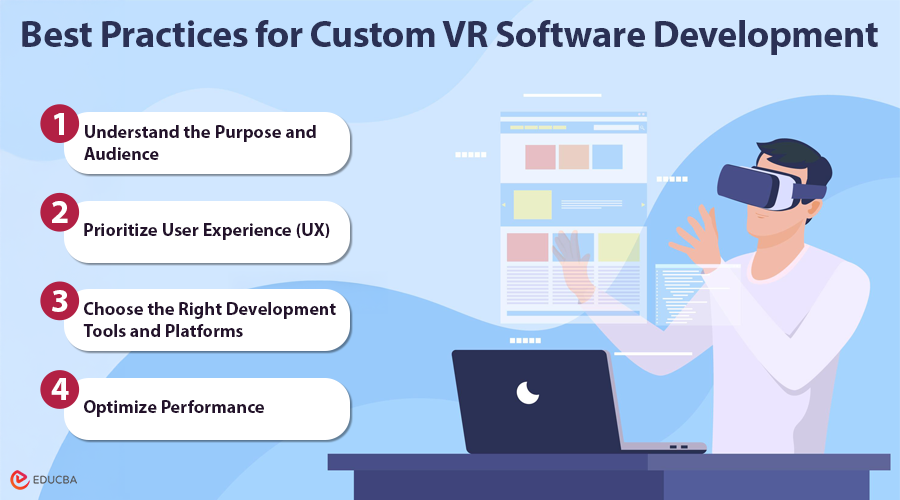Educba
6d
275

Image Credit: Educba
Best Practices for Custom VR Software Development
- Custom VR software development is crucial for creating tailored VR applications to meet specific needs and deliver immersive experiences.
- Top 10 best practices for custom VR software development include understanding the purpose and audience, prioritizing user experience, choosing the right development tools, and optimizing performance.
- Incorporating iterative development, ensuring cross-platform compatibility, and implementing robust testing and quality assurance are key practices in custom VR software development.
- Developers should focus on security and privacy, plan for post-launch support, and integrate analytics and feedback mechanisms to enhance VR applications.
- These practices help in creating immersive, reliable, and future-proof VR solutions that meet user needs and contribute to the advancement of VR technology.
- Post-launch support, bug fixes, and feature updates are essential for maintaining the functionality and relevance of custom VR applications over time.
- Utilizing best practices ensures that VR applications align with user needs, deliver high-quality performance, and offer seamless functionality across various platforms.
- Custom VR software development involves designing for VR-specific challenges like 3D spaces, motion tracking, and real-time rendering, emphasizing the importance of user experience (UX).
- Security measures, such as data encryption and secure authentication protocols, must be implemented to safeguard sensitive user data in VR applications.
- Analytics, user feedback mechanisms, and continuous development are essential elements for improving user experience and functionality in custom VR software.
Read Full Article
16 Likes
For uninterrupted reading, download the app